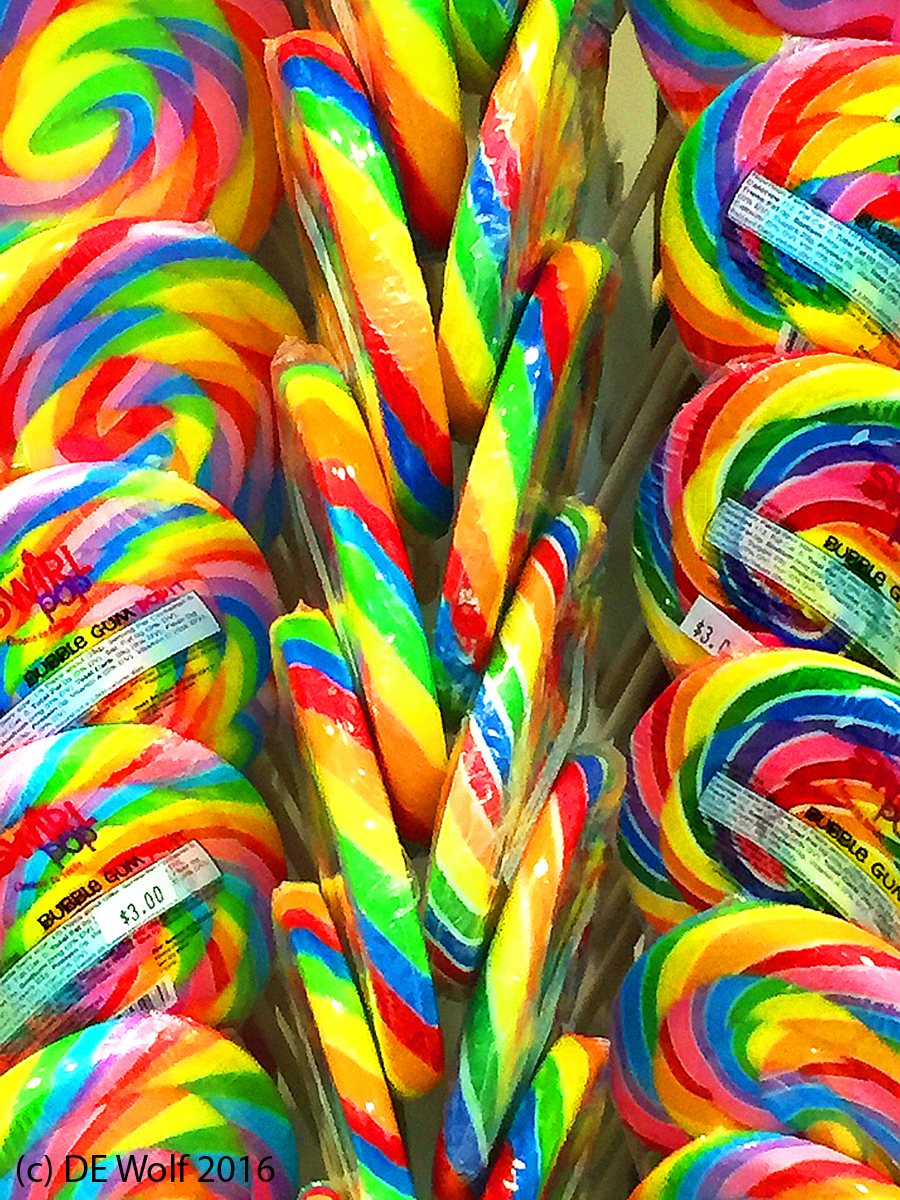Sometimes it’s just fun to take photographs, and that’s where the cell-phone comes in as a major source of entertainment. So today I want to offer up confectionery delight with Figure 1 – Lollipops. The word “lollipop” in and of itself is wonderful, especially when you onomatopoetically emphasize the syllable “pop,” as in “lol-lee-POP.”
I headed to the Wikipedia to learn about the world of lollipops, and the first thing that I found out is that the ones pictured in my photograph are referred to as “large, rainbow-swirl lollipops.” The first lollipops date back to medieval times when the nobility would eat boiled sugar with sticks as handles. The word ‘lollipop’ was first recorded by English lexicographer Francis Grose in 1796. The term may have derived from the word “lolly” (tongue) and “pop” (slap). The story gets confusing when it comes to lollies in the Americas. Many people believe that they were invented around the time of the US Civil War. George Smith claimed the invention of the modern style lollipop in 1908 and trademarked the lollipop name in 1931.
As for the lollipops of Figure 1. These are reminiscent to me of what were variously called, depending upon size, as “eight hour,”” twelve hour,” and “all day” suckers when I was a child. I, myself, could not make them last, as I was an “inevitable cruncher” of lollipops, indeed of all “sucking candies.” My grandmother referred to these as “hard candies” and always had a supply of “sour balls” on hand when my sister and I came over. Still there were those with the endurance to lick away for hours – and worse to store them by their bedsides overnight as their teeth and pancreata rotted away at a tender age. It is hard to recall, but I suspect that these were the same children who would disgustingly lick out the centers of their Oreo cookies.

